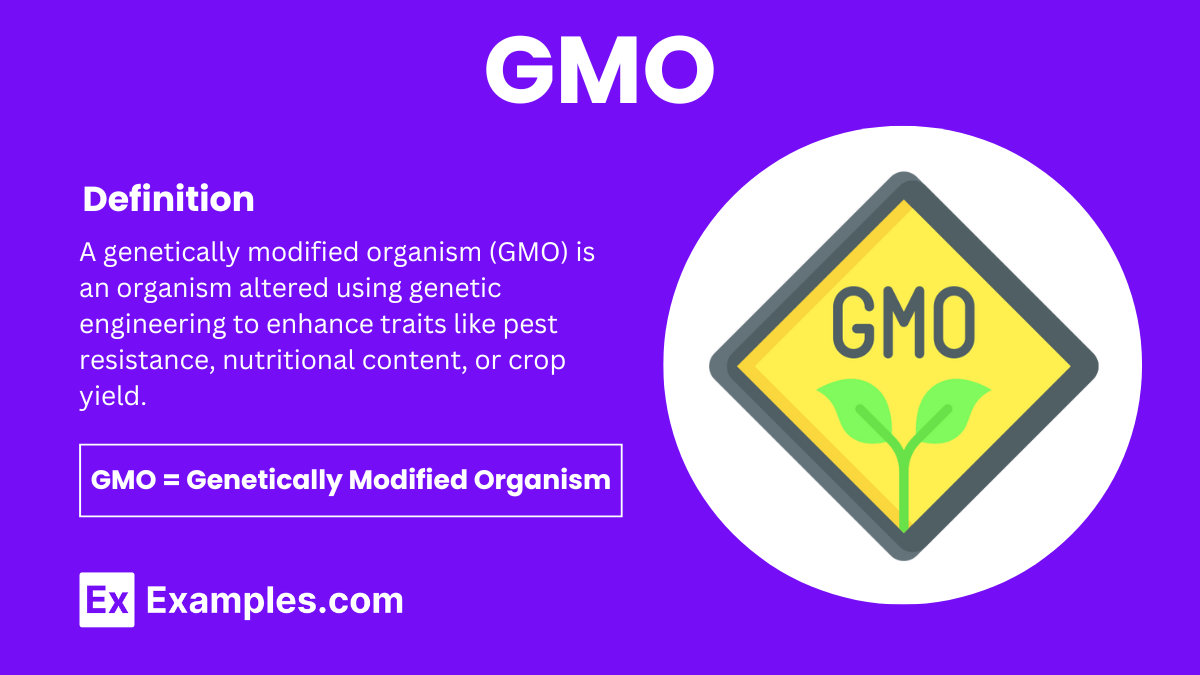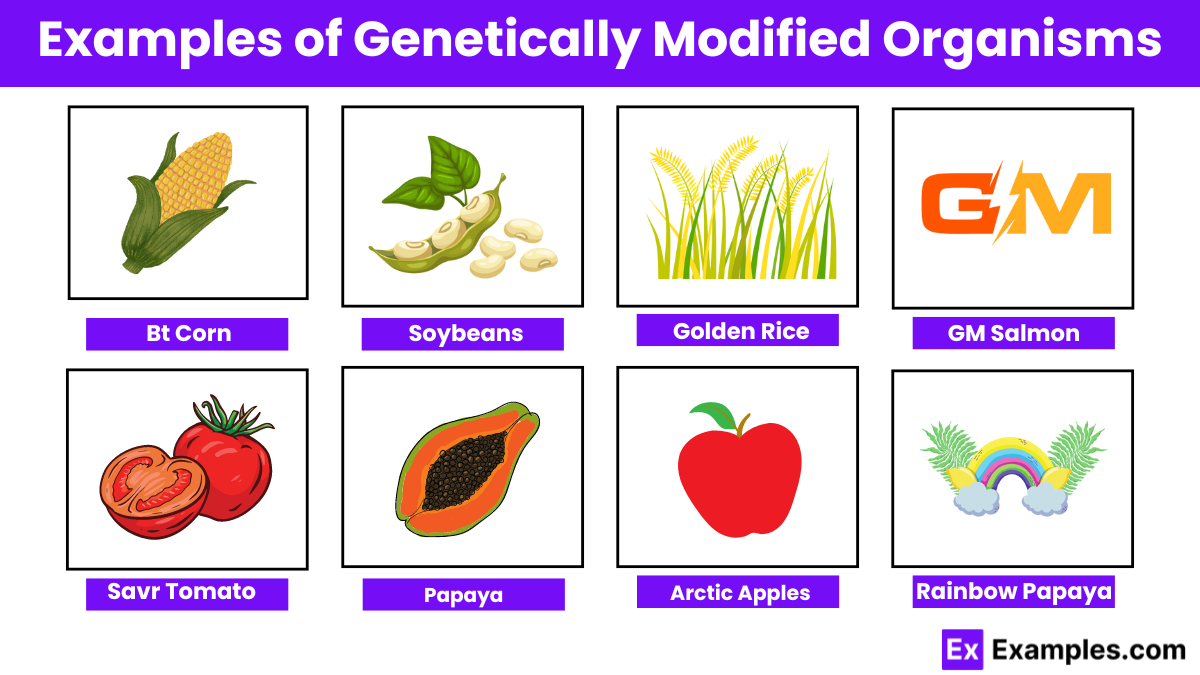What does GMO stand for in the context of biotechnology?
Genetically Modified Organism
General Metabolic Output
Genetic Material Overload
Genetically Modified Output


Genetically modified organisms (GMOs) are organisms whose genetic material has been altered using genetic engineering techniques. This process involves the modification of an organism’s DNA to include traits that do not occur naturally. GMOs are widely used in agriculture to enhance crop yield, resistance to pests and diseases, and tolerance to herbicides. They also play a significant role in medical research, pharmaceuticals, and environmental management. GMOs spark debate over their potential benefits and risks to health and the environment.
A genetically modified organism (GMO) is an organism whose genetic material has been altered using genetic engineering techniques. This modification involves introducing, removing, or altering specific genes to achieve desired traits not naturally found in the organism.

1. Agricultural Benefits
2. Environmental Impact
3. Economic Advantages
4. Health and Nutrition
5. Scientific and Medical Advancements
By altering the genetic material of an organism using biotechnology.
Yes, GMOs undergo rigorous testing for safety before approval.
To improve crop yield, pest resistance, and nutritional content.
GMOs are tested to ensure they do not cause new allergies.
GMOs can have both positive and negative environmental impacts.
Some GMOs are designed to reduce the need for chemical pesticides.
Labeling laws vary by country; some require GMO labeling, others do not.
Soybeans, corn, cotton, and canola are common GMO crops.
Cross-pollination can occur, potentially affecting non-GMO crops.
No, organic farming standards prohibit the use of GMOs.
Text prompt
Add Tone
10 Examples of Public speaking
20 Examples of Gas lighting
What does GMO stand for in the context of biotechnology?
Genetically Modified Organism
General Metabolic Output
Genetic Material Overload
Genetically Modified Output
Which of the following is a common application of GMOs in agriculture?
Increasing the nutritional value of crops
Developing new pesticides
Enhancing the taste of vegetables
Preventing soil erosion
What is a primary concern regarding the use of GMOs in food production?
Increased crop yields
Potential health risks for consumers
Decreased biodiversity
Improved resistance to pests
Which of the following is an example of a GMO?
Organic corn
Hybrid tomatoes
Bt cotton
Heirloom be
How are GMOs typically created in a laboratory?
By selective breeding of plants
By using radiation to induce mutations
By transferring genes from one organism to another
By cloning existing organisms
What regulatory body oversees the safety assessment of GMOs in the United States?
Environmental Protection Agency (EPA)
Food and Drug Administration (FDA)
United States Department of Agriculture (USDA)
National Institutes of Health (NIH)
Which of the following is a benefit of GMOs for farmers?
Reduced need for herbicides
Increased labor costs
Decreased crop resilience
Greater dependence on chemical fertilizers
What is the purpose of the gene-editing technology CRISPR in relation to GMOs?
To create completely new species
To enhance the efficiency of traditional breeding
To make precise changes in an organism's DNA
To eliminate all genetic variations
What is one potential environmental concern related to GMOs?
Increased crop diversity
Development of pesticide-resistant pests
Lower agricultural productivity
Decreased soil fertility
Why is labeling of GMO products a topic of debate?
It is unnecessary for consumer choice
Consumers have a right to know what they are eating
It could increase food prices
It has no impact on food safety
Before you leave, take our quick quiz to enhance your learning!

